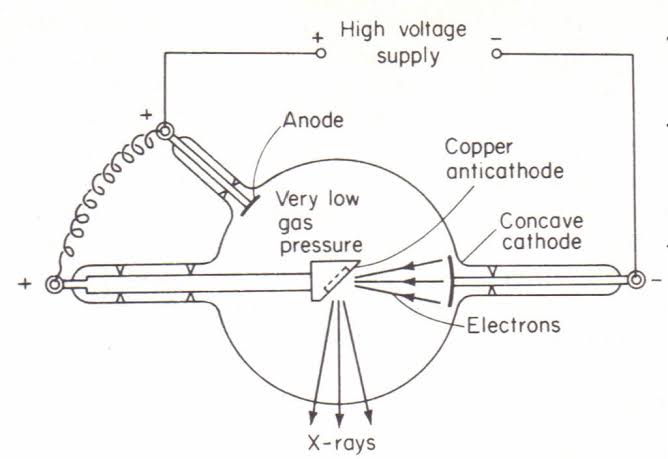In this post we are going to discuss about gas filled x ray tube which is used to produce x rays
Gas-filled X-ray tube :
In this post we are going to discuss about gas filled x ray tube which is used to produce x rays makes the discharge steadier and B is occlusion tube containing platinized asbestos in which gases have been occluded. When the X-ray tube stops working due to very low pressure in it, the discharge is passed through the occulsion tube, the gases enter the discharge tube and it again starts working. The working of the X-ray tube depends on the pressure inside the bulb. If the pressure is comparatively high, the discharge takes place even for a low voltage and the X-rays produced will be very feeble and of low penetrating power (soft X-rays). On the other hand, if the pressure inside is low, a high voltage is needed to maintain the discharge and X-rays of higher penetrating (hard X-rays) are produced. The gas filled tube has serious disadvantages. The gas pressure falls due to the absorption of the ions on the walls of the tube and the intensity of X-rays decreases after some time. Moreover, in such tubes, it is difficult to control the X-ray intensity due to the voltage and pressure requirements for the discharge.
Fig. 1.1 represents an early form of X-rays tube similar to that of a Rontgen tube. G is a glass bulb exhausted to a pressure of 10-³ mm of Hg. C is a concave cathode made of aluminium, which focusses the beam of cathode rays on a target T. Tungsten is used as the target because of its high melting point. This is surrounded by a massive block of copper which helps in the quick dissipation of heat produced by the cathode rays when they are stopped by the target. The target and the copper block together is called the anti-cathode (A.C.), A is a separate anode which


